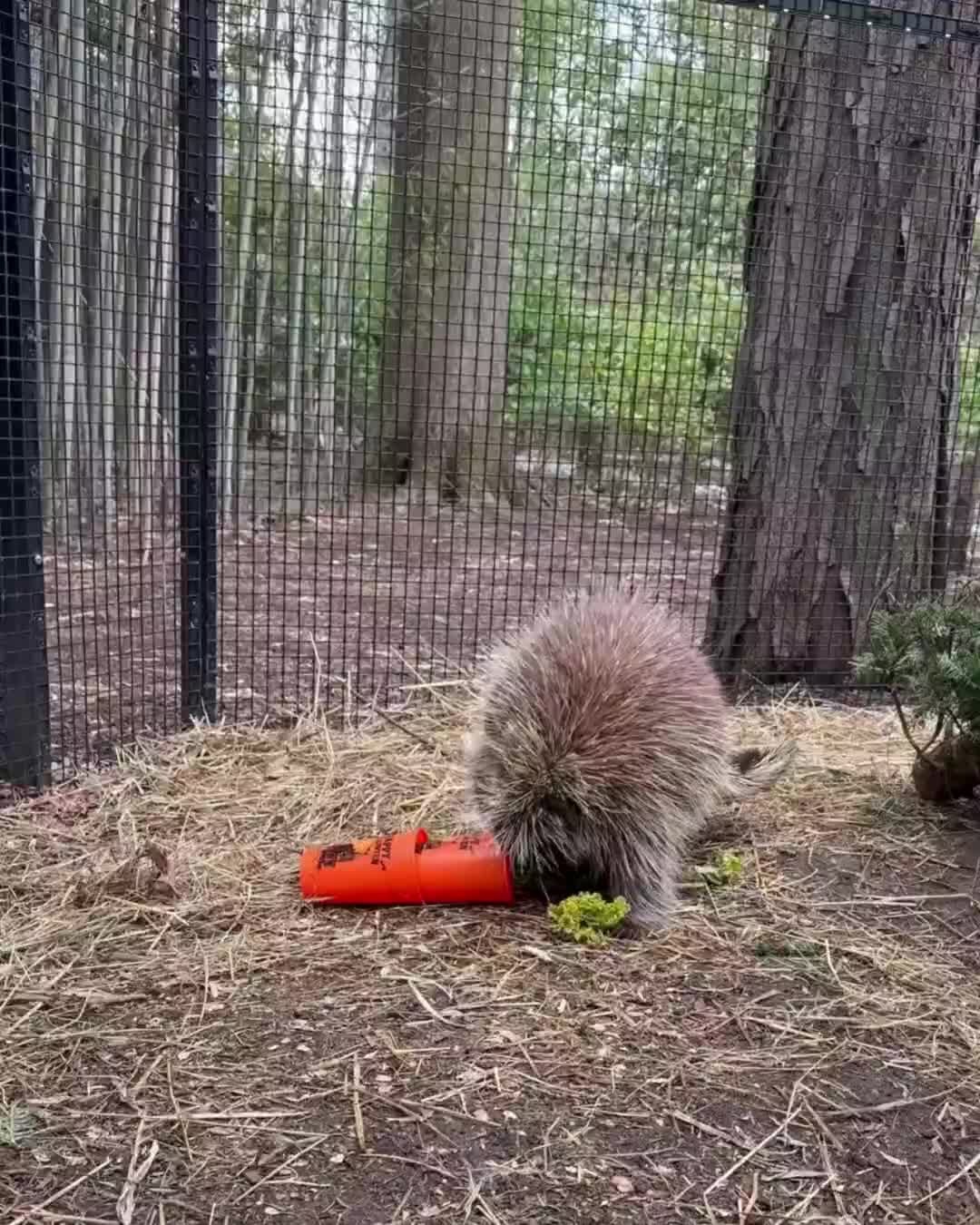- North American Porcupine: Anatomical and Behavioral Traits
- Problem-Solving Skills in Animal Enrichment
- The Importance of Mental Stimulation for Wildlife
- Effective Strategies for Zoo Management and Conservation
- The Role of Viewer Interaction in Animal Learning
The North American Porcupine is a fascinating creature, notable for its distinctive quills and unique biological adaptations. Living in varied habitats across North America, these rodents are often found in forests, mountains, and even urban areas. They possess a robust body covered with sharp, barbed quills, which serve as their primary defense mechanism against predators. Unlike other rodents, porcupines are slow movers, relying instead on stealth and their defensive adaptations.
These animals are herbivorous, feeding mainly on leaves, bark, and fruits. They have specialized teeth that keep growing throughout their lives, enabling them to gnaw thoroughly into tough plant material. Interestingly, the North American Porcupine has a relatively low metabolic rate and can maintain a solitary existence, making them quite adaptable to their environments.
The behavior of the porcupine also reflects its evolutionary traits. Generally nocturnal, they spend the day in trees or hidden dens, emerging under the cover of darkness to forage for food. This behavior usually leads them to consume a variety of plant matter depending on the season, showcasing their adaptability to food availability throughout the year.
Animal enrichment plays a crucial role in promoting the well-being of species like the North American Porcupine. Quillo, a resident porcupine, has been observed displaying remarkable problem-solving abilities when foraging for snacks hidden in various containers. Engaging with enrichment tools encourages animals to use their natural instincts and cognitive skills. This not only combats boredom but also allows for the natural development of essential behaviors such as foraging and exploring.
Problem-solving skills in wildlife are vital for various reasons. In many natural settings, animals face challenges that require them to innovate and adapt. Quillo’s example demonstrates how porcupines, through play and exploration, can enhance their cognitive abilities and gain physical benefits from their actions. The complexity of the tasks presented to him stimulates not just his mind but also promotes physical activity. This holistic approach to animal welfare fundamentally shapes the environmental adaptations that wildlife must navigate.
These engaging activities are complemented by the broader principle of mental stimulation for wildlife. Complex environments are crucial for animal health and behavior. In captivity, animals like the North American Porcupine benefit from environments that mimic their natural habitats and present them with challenges. This helps maintain their natural behaviors, which can lessen the adverse effects often seen in captive situations.
Mental stimulation can take many forms, from puzzle feeders that require manipulation to find hidden snacks to naturalistic enclosures that invite exploration. Enhancing the living conditions of zoo animals creates an environment where they can thrive both physically and mentally. For Quillo, each session of working for his snacks represents an opportunity for growth and learning, contributing to richer life experiences within his enclosure.
Zoo management and conservation efforts are crucial in preserving species like the North American Porcupine. Effective management entails understanding the individual needs of each species, along with implementing best practices for animal welfare. By collaborating with zoologists and conservationists, zoos create environments that replicate the animals’ natural habitats as closely as possible. This strategy ensures that animals like Quillo have spaces that encourage natural behaviors and community interaction, all while providing educational opportunities for visitors.
Viewer interaction is another vital aspect of animal enrichment. Educational programs that engage the public can highlight the importance of species conservation, especially for lesser-known animals like the North American Porcupine. Through these interactions, audiences can better appreciate the complexities of an animal’s life and the challenges they face in the wild. Zoos serve as pivotal educators, inspiring collective action for wildlife conservation efforts that extend beyond their gates.
Furthermore, the communication of information regarding the North American Porcupine emphasizes environmental stewardship. Many people are unaware of their ecological role as herbivores. By consuming plants, these porcupines help maintain the balance within their ecosystems. Their foraging habits contribute to the health of trees and understory flora, demonstrating their importance in forest dynamics.
In summary, Quillo’s journey through various mental challenges exemplifies the broader practices of animal enrichment in modern zoos. The North American Porcupine, with its unique adaptations and behaviors, serves as an excellent model for understanding wildlife needs. Problem-solving exercises allow Quillo to engage his intellect, promoting healthy behaviors that are vital for his well-being.
Integrating mental stimulation into the care of the North American Porcupine can enrich the animal’s life, reinforcing a commitment to conservation and modern zoo practices. The importance of this cannot be underestimated in promoting animal welfare, education, and public engagement. The strides made in animal enrichment encapsulate the growing understanding of wildlife needs and conservation imperatives, ensuring that species like the North American Porcupine continue to thrive in both captivity and the wild.
*****
Source Description
Talk about a prickly situation, Quillo has got to work for his snacks! Our North American Porcupine is using problem-solving skills to get to the food hidden in these cups. Mental stimulation like this helps keep animals engaged and active, promoting natural behaviors and overall health!


